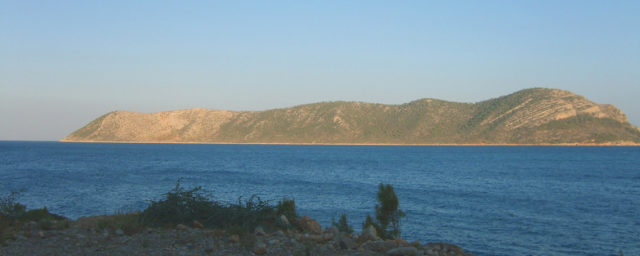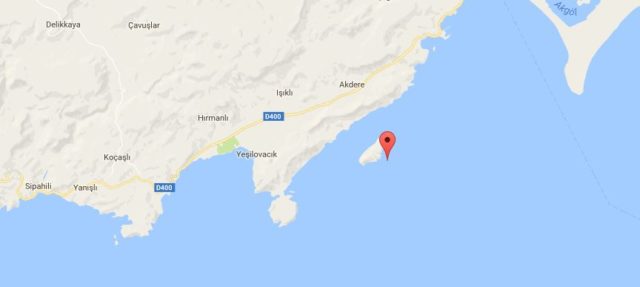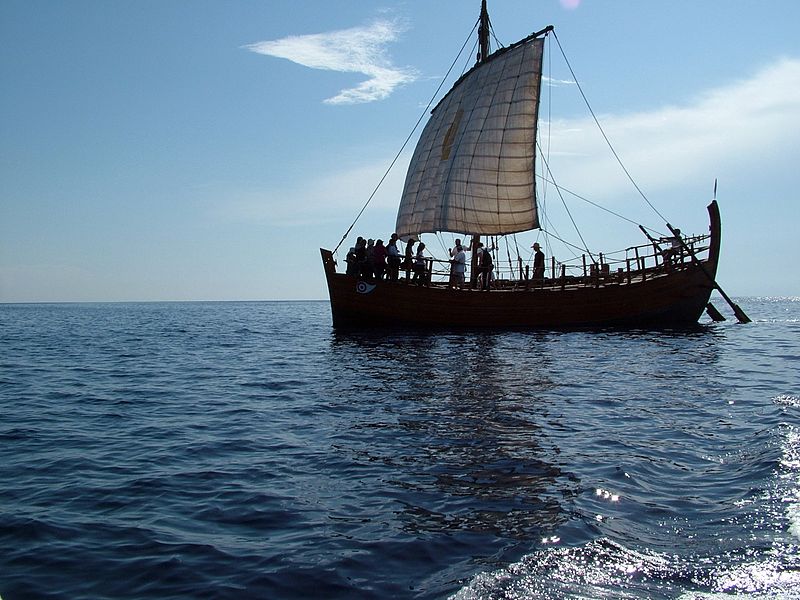An ancient shipyard has recently been discovered inside of the southern coast of Dana Island. Historians have high hopes for the newly-found shipyard. It’s speculated that almost 270 slipways were discovered and could give a groundbreaking insight into the Mediterranean in one millennium B.C.
This discovery is currently documented as the only one of its kind and the ancient shipyard has been declared as the largest in existence.

The leader of the archaeology department for underwater exploration at Selçuk University stated that extraction had begun on the coast of Mersin last year. The goal was to unearth hidden artifacts throughout the area. The department was given exclusive access to the area and other divers were prohibited from the area during the expedition.
The leader of the mission stated that ancient shipwrecks had also been identified and discovered in the area. The most exciting part is that an iron spur had been discovered over thirty meters below the surface. It was likely used on an ancient warship during this era. It was the first time in history that such a discovery has been found.
The team responsible for the discovery had been carrying out experiments and discovery missions starting west and moving east. The ship in charge of the recon is still operating around Dana Island and its range has been declared as about two kilometers off of the coastline.
The team was actually pleasantly shocked as they discovered large numbers of slipways across the north coastline of Dana Island in 2015. The crew is still working on identifying the date of the structure, but they have an idea due to the story the clues are telling.
As the search continued throughout 2016, the team discovered a massive shipyard. It’s believed that 274 ships could be crafted at one time, making it by far the largest ancient shipyard ever discovered. The team was enthralled with the findings and they have paid their dues through scientifically dating the discovery back to a specific time. The team currently believes that the shipyard dates back to later in the Bronze Age, around 1200 B.C.
More about the Denyen Island:
Dana Island is known historically as the island of Denyen and was given by the Sea People that inhabited the land during the twelfth century. The Denyens first emerged in the history books under King Telipinu, a Hittite ruler that lived around 1500 B.C. It is the same region of modern day Adana and Mersin.
And while there is very little information, ancient scripts from Egypt documented the shipments of grains throughout the Alexandria region during the rule of Pharaoh Ramses II.

This was a very productive land in terms of agriculture, but sources that point towards the area indicate that the land was decimated by famine. It’s believed that the Denyens may have worked together with other civilizations that were suffering from famine to launch an attack on the Egyptians.
The mission was to acquire grains from Egyptian shipments, but the Denyens were defeated and the captured warriors were sent off to different regions to serve as soldiers in the Egyptian army. The rest of the Deneyns were tracked by the Egyptians back to their home on the northern part of the land and were subsequently destroyed.
However, this encounter wasn’t strictly to the Deneyns and their Hittite allies. Other documents told tales of other Hittite kingdoms inside of the Cilicia region revolting against the almighty Babylon Kingdom in hopes of acquiring iron and grain. During this era, the island became known as Pitusu.
The King of Babylon was named Neriglissar; he praised the island as a mountain that was located randomly in the middle of the ocean. He chose to launch an attack but 6,000 brave warriors rose to fight against his army, Hurriyet Daily News reported.
The resulting documents allowed experts to form a conclusion that the island served as a powerful shipyard during the Iron Age as well. However, accounts of the island simply vanished about eight centuries ago and the Turkish Republic refuses to grant access to any work or structuring in its territory. In turn, the island has become a time capsule and has been deemed as a living part of a history of the Dark Ages.
